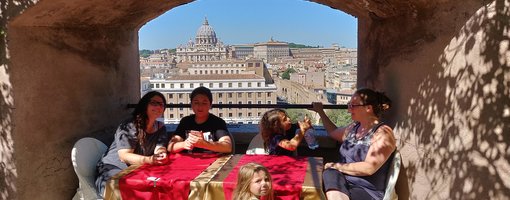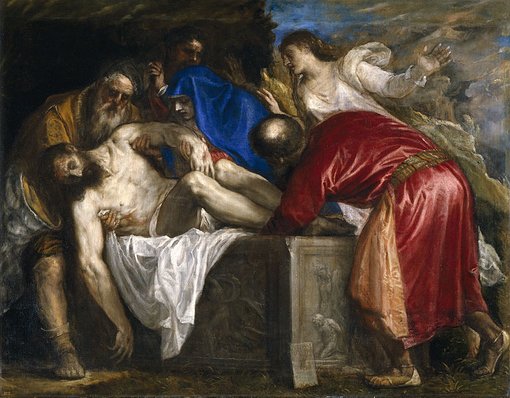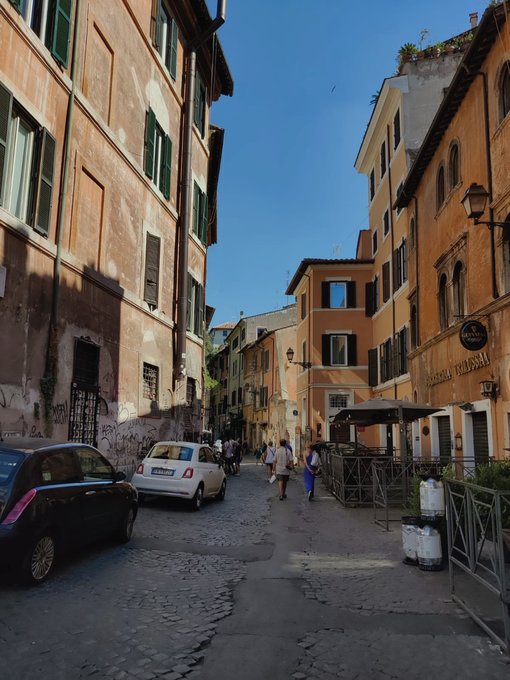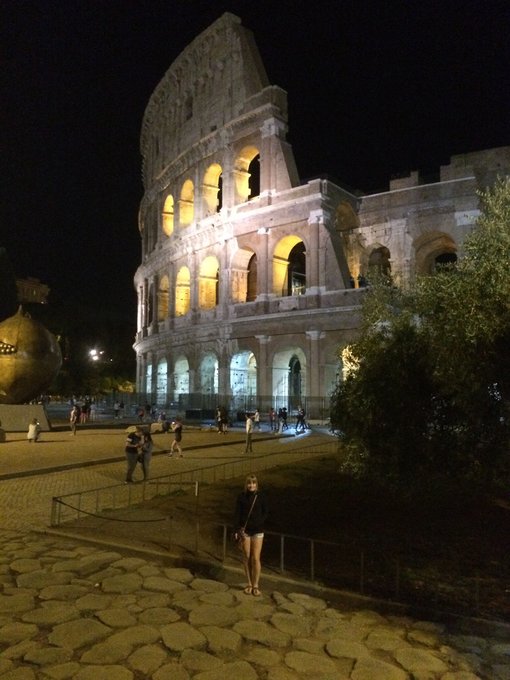On my third time in Rome, I decided to still run around like crazy and revisit some of the sights, but also add to my list new places that were a bit out of the way. So I went to the Etruscan Museum taking the "scenic route" by tram on a beautiful morning. It was conveniently planned for just before my visit to the Borghese Gallery which is quite near - it takes no more than 20 minutes to reach it through the park. I spent just over 2 hours in there but I could have easily stayed more if I hadn't been on a fixed schedule.
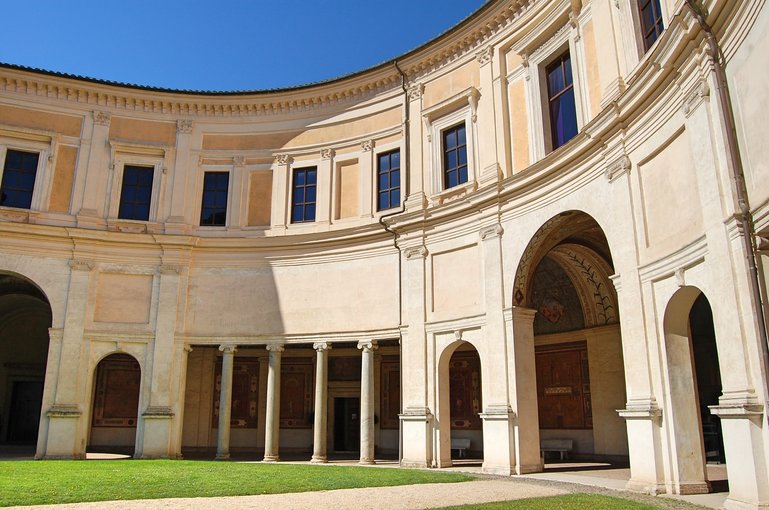
Villa Giulia inner courtyard
The Museum is housed in a beautiful Mannerist-style villa from the 16th century which belonged to Pope Julius the IIIrd. Seems it was very "bon ton" at the time to own a villa around the edges of the city walls, therefore not only the popes, but also their relatives and other nobles were having them built frantically. This one in particular became a museum in the XIXth century and it now houses 40 rooms of Greek, Etruscan and Roman artefacts and artwork recovered from archeological sites around Northern Italy.
The oldest objects on display pertaining to Italian soil are from around the VIIIs century BC, the iron age. During this time, the Peninsula saw intense commerce with Phoenicia and different Greek peoples were establishing colonies in the Italian peninsula and the islands around. The wonderful acculturation between the Oriental, Greek and old local cultures is beautifully articulated as you start walking in the museum. Passing through the first 7 or 8 rooms, the first Pheonician-looking objects and vases imperceivably turn Greek-looking and then Roman-looking. The Etruscan Bucchero pottery (black and glossy) depicts different fighting scenes and often animals which are not native to the peninsula. A lot of it looks rather Oriental and this may not just be due to the connections with the southern Mediterranean trading ports.
This apparent Oriental character might also be attributed to the origins of the Etruscan people, who, according to Herodotus, migrated from Lidia in Asia Minor by sea due to a great famine and landed in today's Tuscany. Here they developed and expanded further despite finding themselves at odds with other City States from these lands. There is of course a contradictory conitnuity theory but the truth is we know less than we'd like about the Etruscans. Still a few interesting things make them stand out.
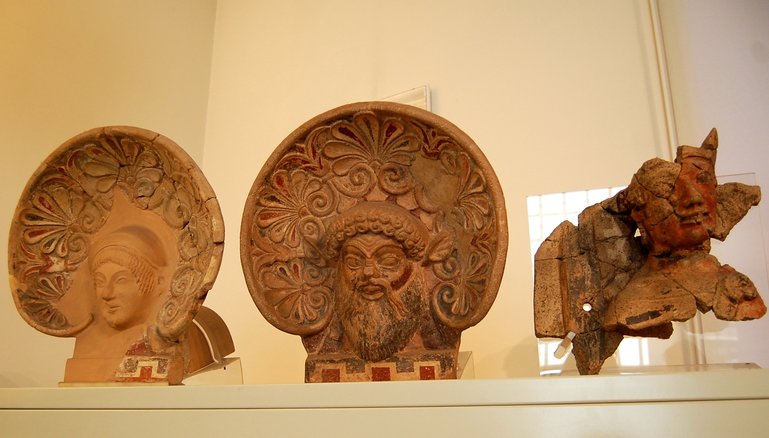
Silenus decorations
One that I would point out here is the status of women in society. It is evident in the way women are portrayed that they are not merely a decorative presence. That is already more than can be said about other cultures of the same era, including the Greek one. A good example is the most famous piece the Museum has on display, the Couple's Sarcophagus. Contemplating this piece, one can see that the two betrothed lovers are sharing in the celebration with equal joy and interest. Another thing to keep in mind is their smile... I have rarely seen sculptures of smiling women or men, even when the situation portrayed is a happy one, let alone in a funerary circumstance. If you do see a smiling statue that is not embodying Commedia, then it is probably a case of what is scholarly called "ancient smile" - a flat and fake-looking smile that is meant to indicate a general state of mind of the subject rather than genuine emotion. The smile on the faces of the two lovers that are united in death sure falls under this category, but given its age (5th century BC) and the fact that it is a funerary statue, I think it's hinting to the intimacy of the relationship between the man and woman. I also find their pose to be very modern - the way in which they are gesturing and the man's natural and affectionate embrace evokes a romantic idea of happy marriage out of love.
It doesn't take a specialist to realise some of the things exhibited are quite original and have nothing to do with classic European art as we understand it. Horned masculine faces, faces with large decorative feather-like elements around their faces, a certain type of huge earrings (quite fashionable today if you ask me). Some reminded me oddly of Asian or South-American figures (interesting visual cue completely unsupported by facts). This is one of the things I enjoy museums so much for. When the mind is not educated enough to understand certain things, it will just grab onto any reference it can find and make some really odd connections.
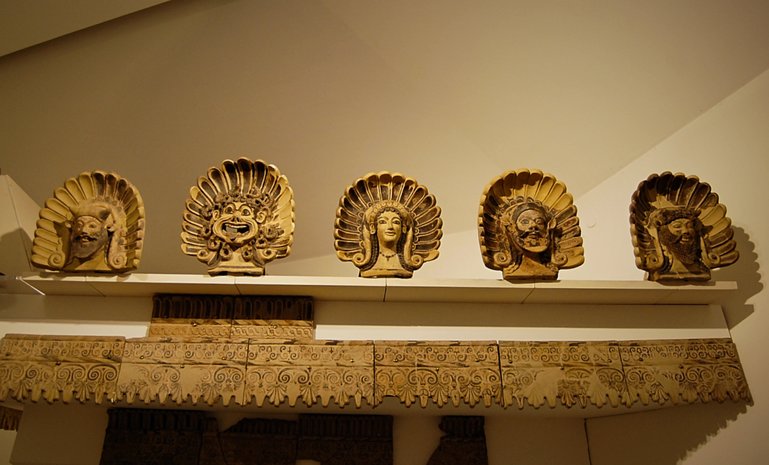
Portico decorations
The Museum is very informative on its own and well arranged. What I particularly liked was the fact that I did not really need an audioguide to follow through the history of the art, the objects and the artefacts. There was quite enough info available in Italian and English for anyone who wanted to read. The exhibits initially seem to be going into a chronological order, but soon this turns into a geographical based logic. This is due to the many different peoples who inhabited the land we now call Italy and who are represented in the Museum: the Vulci, the Veii, the Umbrii etc. Different burial sites uncovered populations that coexisted at the same time but were different from each other.
My own capacity for historical detail is not sharp enough to be able to identify the differences, but the binding line between them all was a similar culture of life and death that is revealed through every object they used. All suffered the strong influence of the Greeks but that only makes the emergence of indigenous, unique traits of the local culture more poignant compared the universality of Greek culture.
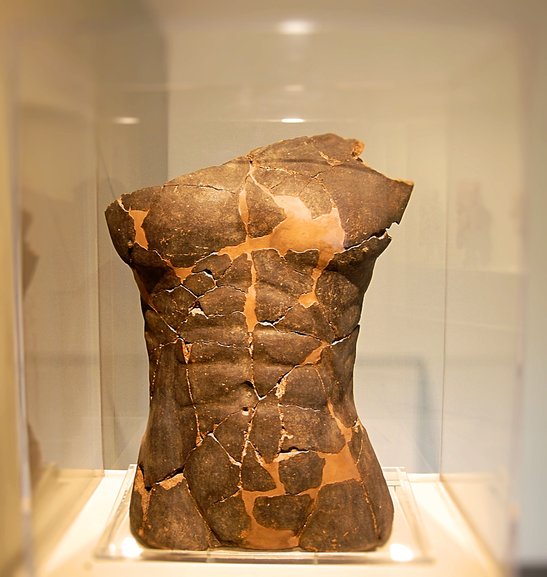
Ancient Hercules bust




